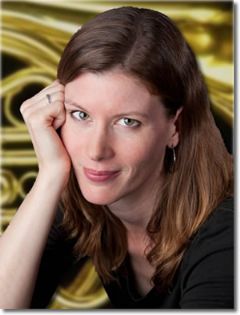|
Symphony
FROM THE NEW WORLD TO THE OLD WORLD
by Peter Lert
Saturday, June 14, 2025
Chamber
MC2 DUO RECITAL CLOSES 222'S SEASON
by Terry McNeill
Saturday, June 14, 2025
Choral and Vocal
CANTIAMO SONOMA'S LUSCIOUS A CAPELLA SINGING IN SEASON ENDING CONCERT
by Pamela Hicks Gailey
Sunday, June 8, 2025
Symphony
SRS SEASON ENDS WITH RESOUNDING TA-TA-TA-BANG
by Terry McNeill
Sunday, June 1, 2025
Symphony
YOUTHFUL VIRTUOSITY ON DISPLAY AT USO'S MAY CONCERTS
by Peter Lert
Saturday, May 17, 2025
Symphony
MYSTICAL PLANETS AND LIVELY GERSHWIN ORTIZ AT FINAL SRS CONCERT
by Peter Lert
Sunday, May 4, 2025
Symphony
VSO'S CONCERT MUSIC OF TIME, MUSIC OF PLACE
by Peter Lert
Sunday, April 27, 2025
VOCAL ELEGANCE AND FIRE AT THE 222'S RECITAL APRIL 26
by Pamela Hicks Gailey
Saturday, April 26, 2025
CANTIAMO SONOMA SINGS AN INSPIRED GOOD FRIDAY MOZART REQUIEM CONCERT
by Pamela Hicks Gailey
Friday, April 18, 2025
DRAMATIC SHOSTAKOVICH SYMPHONY CLOSES PHILHARMONIC'S 25TH SEASON
by Terry McNeill
Sunday, April 13, 2025
|
 |
 SRS Hornist Meredith Brown |
A TROIKA TO REMEMBER
by Steve Osborn
Saturday, March 21, 2015
At the beginning of the 20th century, Russia was home to three extraordinary composers--Rachmaninoff, Prokofiev, Stravinsky--whose stars continue to shine. Rachmaninoff carried on the Romantic tradition, Stravinsky tried to annihilate it, and Prokofiev landed somewhere in the middle, clinging to traditional forms while injecting radically new content.
Their differences were well illustrated by the Santa Rosa Symphony in their March 22 concert in Weill Hall. Conductor Bruno Ferrandis chose youthful pieces by each one: the Rachmaninoff Piano Concerto No. 1, written when he was 18, the Prokofiev Piano Concerto No. 1, penned at 20, and the Stravinsky "Firebird" suite, at an ancient 27. Pianist Olga Kern played both the concertos, and Symphony first chairs supplied pervasive solos in the Stravinsky.
Wearing a gorgeous one-strap purple gown, the svelte, blond-haired Kern exuded confidence from the opening notes of the Rachmaninoff, and she got better as the concert unfolded. She sits straight but not rigid, her head slightly bent over the keys, her concentration intense. Her arms move as gracefully as a ballerina's, and her fingers fly over the keyboard with flawless rapidity.
Kern didn't really stand out until the cadenza of the opening movement, where she hit low notes with pinpoint accuracy while playing intricate fast passages in the upper registers. She then made a beautiful transition to a slower tempo, changing the mood in a split second.
While the first two movements of the Rachmaninoff are fairly bland, the third--which he reworked at a later date--offers some musical challenges. These Kern met to a degree, but her dynamic range seemed limited, and her interpretations too straightforward. The movement calls for drama and expressivity, but Kern was mostly subdued, if technically perfect.
The Prokofiev, which began the second half, ratcheted the drama up by several notches. The memorable opening phrase, with its strong accent at the top of a melodic arch, calls for all-out playing from both orchestra and soloist. Here Kern got more in the mood, playing the many iterations of opening phrase with vigor and the subsequent passages with fierce intensity. While at times hampered by inadequate dynamic contrast, she drove into the final section relentlessly, engaging in an animated call and response with the orchestra. The run-up to the end was truly bravura, and the sustained ovation well deserved.
After the Prokofiev, the orchestra emerged from the shadows to perform the suite from Stravinsky's "Firebird" ballet, a staple of the modern repertoire. Beginning with a six-note figure in the low strings, the suite moves inexorably forward, each section reflecting the action of the ballet. Even without the dancers, one can imagine their motions.
In the "Firebird," with its spiky rhythms and incessant melodic handoffs, all the orchestral parts have to fit exactly for the music to work. The fit in this performance was precise, and hearing the hot-potato phrases skip from woodwinds to brass to strings was a sonic delight. Ferrandis held everyone together with a steady beat that was easy to read.
The "Firebird" unfolds by degrees. Most of the first half is relatively subdued, with frequent solos from first chairs, most memorably the French horn. Horn principal Meredith Brown played each of her solos impeccably, with wonderful tone. The enchanting interplay between soloists and full orchestra came to an abrupt end with a mighty blow to the bass drum. The transition was so effective that several people around me jumped in their seats.
The tempo in the latter part of the suite was often fervid, with Ferrandis leading the charge. The brass,led by principal trumpeter Doug Morton, were especially prominent. The sustained buildup led to a tremendous orchestral chord and an abrupt transition to quietude, marked by a wonderful bassoon solo from principal Carla Wilson. During a subsequent pianissimo tremolo from the strings, the audience sat in pin-drop silence. The final bars, marked by a restatement of the horn solo and principal theme, were nothing short of triumphant, culminating in a thrilling final chord.
The concert was the best of the Symphony's season to date, and their performance of the "Firebird" was exceptional. Another reason for the concert's success was the cogent choice of repertoire. The beginning of the 20th century was a splendid time for music in Russia, and the concert displayed the range and depth of that period. Now if only Ferrandis could assemble a concert with substantial works by three 21st century American composers. Future audiences might find them as innovative and inspiring as their Russian counterparts.
Ed. Note: this review is the first of two for the concert
|

